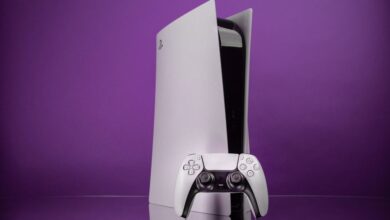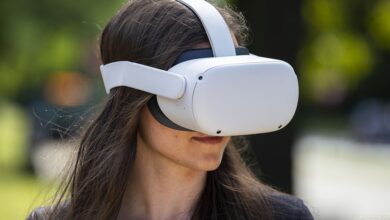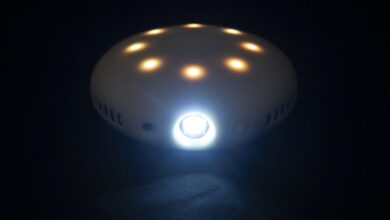The best gaming TV: Low input lag and high picture quality

[ad_1]
The best TV for gaming is generally the best TV for everything else, too. Nailing the basics of picture quality, such as contrast, color, brightness and resolution, ensures games as well as movies, TV shows and other video look good. But gaming performance can also benefit from additional features, including low input lag and, in the case of next-generation consoles like the PlayStation 5 and Xbox Series X, advanced input capabilities.
We cover the best TVs for PS5 and Xbox Series X, Series S with 4K, 120fps input and VRR in another list, and many of them appear here too. The TVs below focus on low input lag. How fast you react while gaming depends on a feedback loop between your brain, your fingers, the game controller and the action you see on the TV screen. Delay at any point will diminish your performance and the thrilling immediacy of the playing experience. It takes mere milliseconds for a video signal to travel from your console through the HDMI input on your TV to display on the screen, but too many milliseconds can be noticeable to your brain, or downright deadly to your in-game character. Those milliseconds are known as input lag.
Sarah Tew/CNET
TV input lag with game mode on and off (milliseconds)
| TV Model | Year | On (1080p) | Off (1080p) | On (4K HDR) | Off (4K HDR) |
|---|---|---|---|---|---|
| Hisense 65R8F | 2020 | 13.37 | 32.00 | 13.47 | 109.43 |
| LG OLED65CX | 2020 | 13.67 | 88.73 | 13.73 | 89.00 |
| Vizio P65Q9-H1 | 2020 | 14.77 | 59.30 | 14.20 | 109.63 |
| Hisense 65H9G | 2020 | 15.10 | 123.37 | 15.03 | 136.50 |
| Sony XBR-65X900F | 2020 | 15.50 | 91.70 | 15.23 | 91.27 |
| TCL 65R635 | 2020 | 19.97 | 19.00 | 18.27 | 137.40 |
| Samsung QN65Q80T | 2020 | 20.77 | 90.73 | 20.37 | 78.07 |
| Vizio M65Q7-H1 | 2020 | 27.57 | 52.00 | 27.47 | 67.80 |
| TCL 65R625 | 2019 | 11.03 | 11.05 | 11.00 | 94.13 |
| LG OLED65C9P | 2019 | 13.30 | 100.60 | 13.67 | 100.57 |
| LG OLED65B9P | 2019 | 13.67 | 84.47 | 13.70 | 101.43 |
| Samsung QN65Q70RA | 2019 | 14.30 | 72.23 | 14.27 | 59.07 |
| Vizio PX65-G1 [input 5] | 2019 | 14.83 | 82.27 | N/A | N/A |
| TCL 65Q825 | 2019 | 18.57 | 18.63 | 18.17 | 134.93 |
| Sony XBR-65X950G | 2019 | 19.13 | 96.53 | 18.97 | 85.60 |
| Vizio M658-G1 | 2019 | 20.77 | 20.77 | 20.43 | 65.47 |
| Vizio V556-G1 | 2019 | 23.83 | 23.87 | 24.03 | 23.87 |
| Vizio V605-G3 | 2019 | 23.90 | 25.00 | 24.07 | 23.90 |
| TCL 43S325 | 2019 | 25.67 | 34.50 | N/A | N/A |
| Vizio PX65-G1 [input 1] | 2019 | 25.87 | 101.90 | 26.17 | 151.87 |
| TCL 50S425 | 2019 | 31.43 | 32.33 | 29.07 | 33.67 |
The top 6 gaming TVs
The following six TVs, featured at the top of the page, deliver either the lowest lag I’ve measured among the TVs I’ve reviewed, the best picture quality or both.
David Katzmaier/CNET
With the best picture we’ve ever tested and low input lag — among other gaming-friendly features — the LG OLED 4K gaming TV has everything you need for the ultimate gaming experience (and a price to match).
Sarah Tew/CNET
Available for hundreds less than the LG but equipped with comparable gaming features, this Sony 4K UHD smart TV is a strong gaming choice, too.
David Katzmaier/CNET
The Q80T 4K TV is sleeker and better equipped than any gaming TV on this list, aside from the much more expensive LG CX OLED, and offers better picture quality than cheaper Samsungs.
What else you need to know about input lag
How to turn on game mode. In most cases, viewing in game mode isn’t automatic so you’ll have to turn it on manually, and sometimes the gaming monitor setting can be difficult to find. Many use a picture mode called “Game” while some, like Samsung and Vizio, let you apply game mode to any setting. Check our individual reviews for details.
Read more: The best gaming laptop performers of 2021

Sarah Tew/CNET
Game mode makes a difference, except when it doesn’t. As you can see, many TVs cut lag substantially when you turn on game mode, but plenty don’t. In general, expensive TVs with elaborate video processing get more of a benefit when you engage game mode.
Most TVs’ game modes are good enough for most gamers. No matter how twitchy you are, it’s going to be tough to tell the difference between 13 and 30 milliseconds of input lag. Many gamers won’t even be able to discern between game mode on and off — it all depends on the game and your sensitivity to lag.
Read more: Best TVs for 2021
Turning game mode on can hurt image quality (a little). TV makers’ menus often refer to reduced picture quality. Reduced picture quality is generally the result of turning off that video processing. In my experience, however, the differences in image quality are really subtle with console gaming, and worth the trade-off if you want to minimize lag for a great gaming experience.
4K HDR gaming lag is different from 1080p. The display resolution you game at has an impact, and since new consoles prominently feature 4K HDR output for games, I started testing for 4K HDR lag in 2018. In general, the numbers are similar to the lag with standard 1080p resolution, but as you can see from the chart above, there are exceptions.
Vizio’s Input 5 is weird. The fifth HDMI cable port on the Vizio P-Series and PQ TVs have different input lag characteristics than its other HDMI ports. It’s superb for 1080p gaming, but can’t accept 4K HDR content sources. No other TV maker we’ve tested has different lag and capabilities for different inputs.
Testing is an inexact science. I use a Leo Bodnar lag tester. Here’s how it works, and how I use it. You might see different lag test results from different review outlets, which may use Bodnar or another method.
What’s the best TV for gaming, period?
As I mentioned at the top, the best TV for gaming is one that has the best picture quality for viewing everything else, too. Games benefit from deep black levels, bright highlights and uniform screens just as much as movies and TV shows do.
Yes, there are other factors, but they don’t apply to most gamers. If you play the same game constantly on your smart LED TV and never put anything else on the screen, and that game as a bright static element that stays in the same place on the screen (like a HUD or other status display), you might be at risk for OLED burn-in. But most gamers don’t have to worry about OLED burn-in.
If the TV input where your console is connected is shared with other devices and you don’t want to remember to re-engage game mode all the time, an auto game-mode feature might be useful. And some cutting-edge PS5, Xbox One X and PC gamers might appreciate 4K/120Hz input and variable refresh rate.
Most gamers, however, will find that the best TV for gaming is the best TV, period.
[ad_2]
Source link









